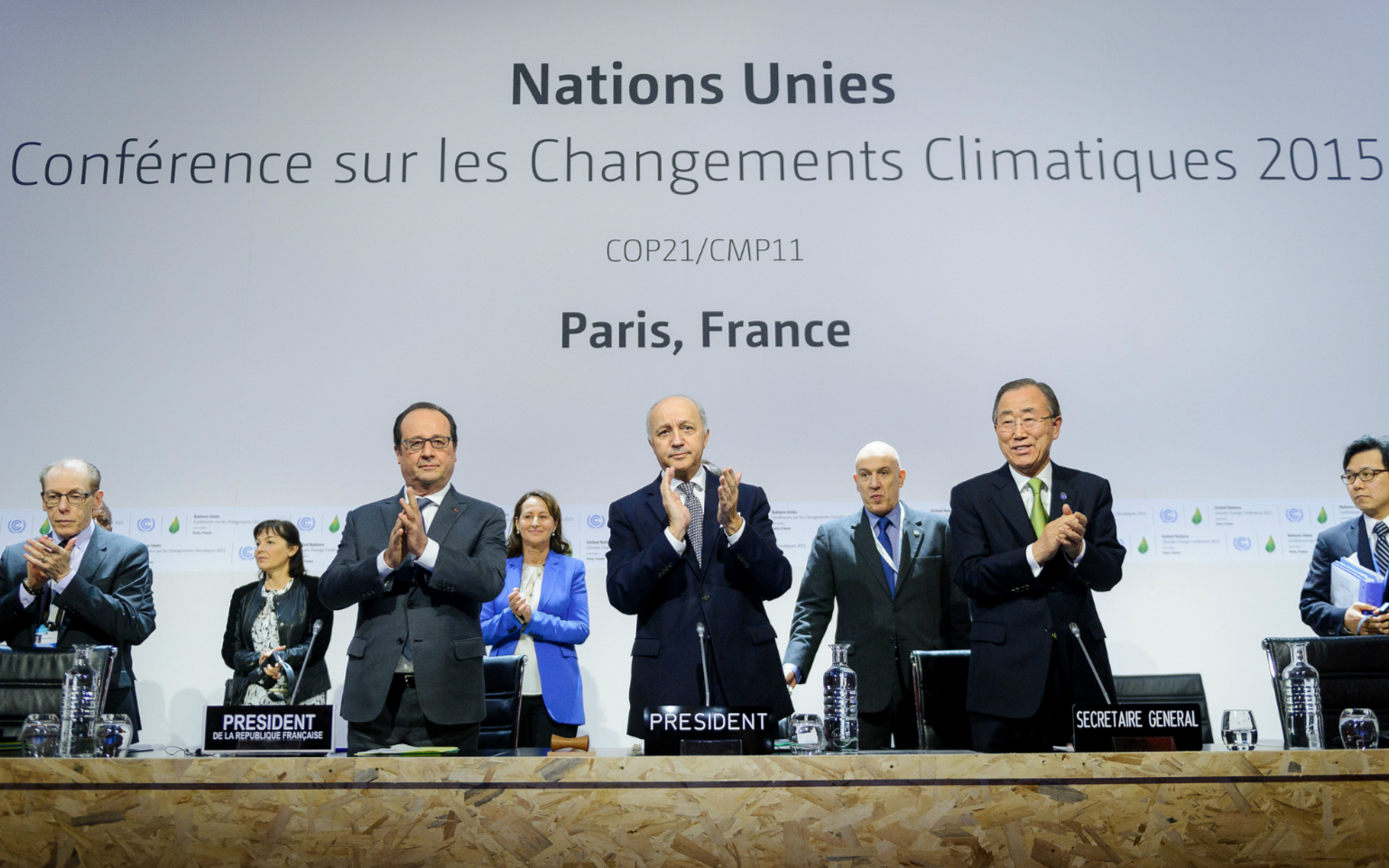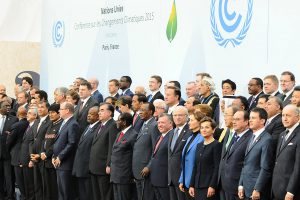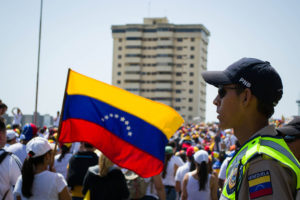A global agreement driven by diplomacy and furnished with some of the tools required to combat global warming has been adopted at the Paris summit of the UN Framework Convention on Climate Change.
French President Francois Hollande said at the closing: “You have made history because you committed. You did not calculate.” The world had entered a low-carbon age, he added.
Balancing the political and economic positions of rich and poor nations, science and business, the Paris Agreement is based on the Intended Nationally Determined Contributions of all countries – from which the word ‘intended’ has now been dropped.
At best, current pledges can keep average global temperature rise within 2.7C, and scientists have said that is not good enough if the world is to avoid catastrophic impacts of global warming. Governments had earlier agreed to keep the warming within 2C, in Paris they have agreed to aspire to keep it within 1.5C.
That is why the Paris Agreement has a provision to revise the pledges in 2018 – when the Intergovernmental Panel on Climate Change (IPCC) will produce a special report on the subject – and then review the situation every five years.
Climate change is already blamed for affecting agriculture, for making floods, storms and droughts more frequent and more severe, affecting rainfall, and raising sea levels.
Many developing countries attending the two-week Paris summit worried that industrialised countries are not doing enough between now and 2020, when the Paris agreement provisions are scheduled to begin.
There was little talk of that during the summit. Instead, it went into tortuous debates on whether rich countries were doing enough to control their greenhouse gas (GHG) emissions and whether emerging economies such as China and India should do more. These emissions – mainly carbon dioxide – are warming the atmosphere. Most of the cumulative emissions are from rich nations since the start of the industrial age, though now China is the largest emitter, followed by the US, EU and India.
The US has led rich nations in demanding that emerging economies control their emissions, while China, India and much of the developing world have insisted on the “common but differentiated responsibilities” between rich and poor nations which is one of the pillars of UNFCCC. Earlier, only rich countries had a legal obligation to reduce their GHG emissions. Under the Paris Agreement, this differentiation has been diluted to a large degree.
It reads: “Developed country Parties should continue taking the lead by undertaking economy-wide absolute emission reduction targets. Developing country Parties should continue enhancing their mitigation efforts, and are encouraged to move over time towards economy-wide emission reduction or limitation targets in the light of different national circumstances.”
The other big point of contention was finance. The US managed to move the commitment of rich countries to provide at least US$100 billion a year by 2020 out of the legally binding part of the agreement, but it remained as a decision taken by all the governments.
The big loser in the Paris Agreement was the issue of compensation and liability for the loss and damage suffered due to climate change impacts. Afraid of the lawsuits such a clause could unleash, rich nations wrote into the agreement that there would be no question of compensation or liability.
Global support
With the exception of Nicaragua, all countries expressed their support for the agreement. Xie Zhenhua, China’s Vice Minister for National Development and Reform Commission, said, “The agreement sends out a clear signal that all countries should change their development model and people should change their lifestyle.”
Xie felt the Paris Agreement had all the necessary elements – mitigation of emissions, adaptation to climate change effects, finance, green technology transfer and capacity building in developing countries. The agreement had “coordination between (climate) ambition and development space,” he said. “All countries have made the correct choice. The next step is implementation.”
China has pledged to peak its carbon emissions by 2030 and may do so earlier. Xie reiterated his government’s promise to reach that peak “as soon as possible”.
Prakash Javadekar, India’s Minister for Environment, Forests and Climate Change, said: “The agreement supports the right to development. It has reflected climate justice. We all together will mitigate the challenge posed by climate change and we’ll give a better earth.”
Javadekar did feel the Paris Agreement “could have been more ambitious” and that industrialised countries were doing “far below their historical responsibility and fair share” to combat climate change. He hoped the adoption of the agreement would “mark a new beginning where commitments will be fulfilled”.
US Secretary of State John Kerry said: “None of us think it’s perfect and this has to be the way; otherwise it wouldn’t have been an agreement.” He added that the agreement would be sending a message to global markets for a transition to a global clean energy economy.
The Paris Agreement
The final agreement is 31 pages, with an 11 page legally binding portion and a 20-page set of “decisions” by the assembled delegates.
The long-term goal in the agreement is to peak global GHG emissions as soon as possible. Combined with the goal of limiting temperature rise to 2C, governments will need to phase out fossil fuels from electricity generation by 2050, according to the IPCC.
All countries will have to report on their mitigation actions and the financial and technological support, both given and received. All countries will have the same system of measuring, reporting and verification of emissions, and all will be measured against the same standards. But developing countries will have some flexibility on the scope and details of their reports. All but the poorest and smallest countries must report at least every two years. An international committee of technical experts will review all reports.
For many years, developing countries have complained that adaptation to climate change effects do not receive the same attention as mitigation of emissions. The Paris Agreement makes it incumbent upon developed countries to provide financial and technological support for this purpose.
French Foreign Minister Laurent Fabius – who presided over the summit – said the Paris agreement was “fair, durable, dynamic, balanced and legally binding”.
Christiana Figueres, Executive Secretary of UNFCCC, said: “It is an agreement of long-term vision, for we have to turn this agreement into an engine of safe growth.”
Apart from the welcome it received from almost all delegates, the agreement also left business groups and many think tanks happy; some green groups were cautious in their welcome for the climate deal, while others were critical.
Greenhouse gas emissions will need to be brought down to net zero within a few decades, said John Schellnhuber of the Potsdam Institute for Climate Impact Research said. He added: “To stabilise our climate, carbon dioxide emissions have to peak well before 2030 and should be eliminated as soon as possible after 2050.”
Jennifer Morgan of World Resources Institute said the agreement would accelerate the energy transformation that is well underway, “pointing us to a safer and stronger future.”
But for some developing country campaigners, the agreement had shortcomings. Sanjay Vashist of Climate Action Network South Asia (CANSA) termed the treaty “durable and dynamic, but one that has fallen short on being fully fair and responsive to future needs.”
The agreement had deprived the world’s most vulnerable countries of their right to claim liabilities and compensation for loss and damage, pointed out Rezaul Karim Chowdhary of Coastal Association for Social Transformation Trust (COAST) of Bangladesh.
Helen Szoke of Oxfam said: “Only the vague promise of a new future climate funding target has been made, while the deal does not force countries to cut emissions fast enough to forestall a climate change catastrophe.”
Adriano Campolina, ActionAid Chief Executive, said the agreement doesn’t “go far enough to improve the fragile existence of millions around the world”.
But overall, the mood was one of elation, as UN Secretary General Ban Ki moon closed the summit by saying: “The time has come to acknowledge that national interests are best served by acting in the global interest. We have to do as science dictates. We must protect the planet that sustains us.”
The full text of the Paris Agreement can be accessed here








